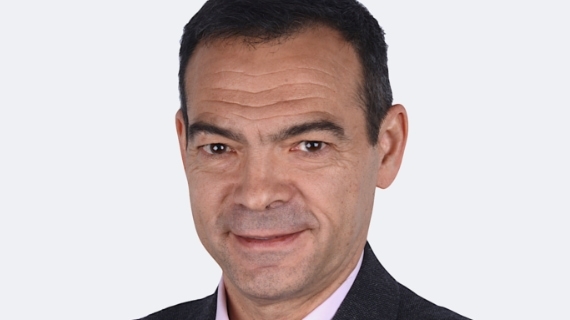Guillermo Pradíes
CAD/CAM ceramic veneers with “Skyn” concept. Predictibility and esthetics from the beginning to the end | Mechanical and virtual articulators in the new era: the role of facial scanners and jaw tracking systems

- Full professor and Head of the Conservative and Prosthetic Dentistry. Complutense University of Madrid (UCM).
- Director of the MASTER PROGRAM in “Restorative Dentistry based on New Technologies” at the UCM.
- SEPES (Spanish Society of Prosthodontics and Esthetic dentistry) President.
- Master degree in Prosthetic Dentistry at the University Complutense and Specialist in Prosthodontics by the European Prosthodontics Association.
- Research activity is focused in:
- Digitalization resources and CAD/CAM workflows;
- Behavior of Dental Materials;
- Application of Artificial Intelligence (AI) in dentistry.
- More than 100 scientific articles and 4 text books.
- Associate Editor of Brazilean Dental Science Journal and Assistant editor of European Journal of Prosthodontics & Restorative Dentistry.
- Member of the council and the specialist committee of the EPA (European Prosthodontics Association) as well as Past President (2018).
Nationality: Spain
Scientific areas: Prosthodontics, Prosthodontics
10 of november, from 09h00 until 12h30
Auditorium B
Conference summary
09:00 – 10:30 (AM)
CAD/CAM ceramic veneers with “Skyn” concept. Predictibility and esthetics from the beginning to the end
The use of CAD/CAM technology for the execution of monolithic aesthetic cases with fully ceramic materials in the anterior sector is a well-established procedure today.
For cases to be successful, it is crucial that the aesthetic design planned in the Digital Smile Design is clearly established in the Mock-up phase, and that the workflow allows the result of the veneer placement to be “faithful” to the approved mock-up.
During this presentation, the “Skyn” work protocol will be showcased, based on a 100% digital flow for obtaining CAD/CAM ceramic veneers. This flow allows the patient to be offered highly aesthetic and predictable works thanks to the original digital libraries used, as well as the work algorithm on which they are based. This also allows for very conservative preparations and monolithic veneers of only 0.3mm.
Thanks to this protocol, it is possible to complete cases in just two appointments and in working times that do not exceed two weeks for the entire protocol, with the consequent benefit for the patient and the professional. During the presentation, a large number of clinical cases resolved with this protocol will be shown, and their advantages and implementation procedure, ceramic materials used, etc. will be analyzed.
11:00 (AM) – 12:30 (PM)
Mechanical and virtual articulators in the new era: the role of facial scanners and jaw tracking systems
With the implementation of digital workflows in Dentistry, a significant part of the design and fabrication procedures of prosthetic restorations have radically evolved towards CAD/CAM technology.
A portion of restoration protocols, which for instance involved the use of conventional impressions, models, and their assembly and workflow based on facial arches and mechanical articulators, is in a significant phase of involution.
On the other hand, the implementation of diagnostic protocols and digital smile design are influenced by 2D digital photography and the use of 3D facial scanners.
Lastly, the new systems for mandibular records obtained through intraoral scanners or dedicated devices such as Zebris, Tmj +, Modjaw, based on ultrasonic or photogrammetric technology, are gaining acceptance very quickly.
However, there are scenarios where concepts are still mixed, such as the “virtual articulator” that inherits elements and adjustments from the mechanical articulator which are subsequently applied to CAD software for prosthetic restoration.
Therefore, there is a lot of confusion about what should be the analog protocol, digital or a mix of both to achieve prosthetic restorations appropriate to the occlusal patterns and mandibular movement indicated for each case and patient.
During this presentation, a review of the “state of the art” use of analog articulators, virtual, facial scanners, as well as the main resources for mandibular movement recording will be conducted.